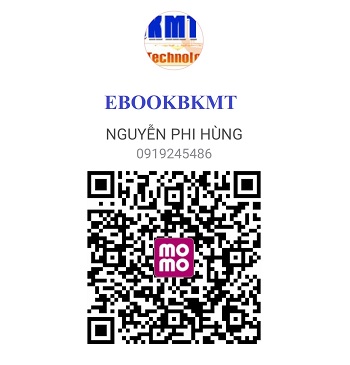EBOOK - Interpreting Engineering Drawings (Ted Branoff)
The eighth edition of Interpreting Engineering Drawings is the most comprehensive and up-to-date text of its kind. The text has been revised to best prepare students to enter twenty-first-century technology-intensive industries.
It is also useful to those individuals working in technology-based industries who feel the need to enhance their understanding of key aspects of twentyfirst-century technology. To that end, the text offers the flexibility needed to provide instruction in as narrow or as broad a customized program of studies as is required or desired. Clearly, it provides the theory and practical application for individuals to develop the intellectual skills needed to communicate technical concepts used throughout the international marketplace.
Flexibility is the key to developing a program of studies designed to meet the needs of every student. Interpreting Engineering Drawings, eighth edition, is designed to allow instructors and students to pick and choose specific units of instruction based on individual needs and interests.
Although students should cover everything offered in the core material in the text (Units 1 through 17), advanced topics are offered throughout the remaining 28 units to provide opportunities for students to become highly skilled in understanding only selected advanced subjects or a broad range of subjects that spread over nearly all aspects of modern industry.
Additionally, ancillary materials offered on the Instructor Companion Website, as well as the Internet Resources listed at the end of each unit, provide for a more in-depth understanding of the material covered. Through the use of these ancillary materials, the depth of understanding achieved is limited only by the student’s time constraints and the desire to master the material provided.
It is important to know that the entire text is developed around the most current standards accepted throughout industry. This includes both decimalinch and metric (millimeter) sizes and related concepts. Both systems are introduced early in the text and are reinforced in both theory and practical application through the broad range of assignments at the end of each unit.
These concepts are further reinforced as students are encouraged to use the Appendix at the end of the text. Tables in the Appendix are given in both systems of measure.
Further, only after the student develops a clear understanding of basic concepts is he or she introduced to more advanced units such as modern engineering tolerancing (geometric dimensioning and tolerancing), manufacturing materials and processes, welding drawings, piping, and other similar advanced topics.
Although Interpreting Engineering Drawings has always used sketching practices as a means of reinforcing the student’s understanding of technical information, the eighth edition greatly expands this important technique. Not only does sketching enhance the student’s understanding of technical concepts, it also enhances his or her ability to communicate technical concepts more effectively.
In keeping with the dynamic changes in the field of engineering graphics, various new features have been added to this eighth edition.
LINK DOWNLOAD
The eighth edition of Interpreting Engineering Drawings is the most comprehensive and up-to-date text of its kind. The text has been revised to best prepare students to enter twenty-first-century technology-intensive industries.
It is also useful to those individuals working in technology-based industries who feel the need to enhance their understanding of key aspects of twentyfirst-century technology. To that end, the text offers the flexibility needed to provide instruction in as narrow or as broad a customized program of studies as is required or desired. Clearly, it provides the theory and practical application for individuals to develop the intellectual skills needed to communicate technical concepts used throughout the international marketplace.
Flexibility is the key to developing a program of studies designed to meet the needs of every student. Interpreting Engineering Drawings, eighth edition, is designed to allow instructors and students to pick and choose specific units of instruction based on individual needs and interests.
Although students should cover everything offered in the core material in the text (Units 1 through 17), advanced topics are offered throughout the remaining 28 units to provide opportunities for students to become highly skilled in understanding only selected advanced subjects or a broad range of subjects that spread over nearly all aspects of modern industry.
Additionally, ancillary materials offered on the Instructor Companion Website, as well as the Internet Resources listed at the end of each unit, provide for a more in-depth understanding of the material covered. Through the use of these ancillary materials, the depth of understanding achieved is limited only by the student’s time constraints and the desire to master the material provided.
It is important to know that the entire text is developed around the most current standards accepted throughout industry. This includes both decimalinch and metric (millimeter) sizes and related concepts. Both systems are introduced early in the text and are reinforced in both theory and practical application through the broad range of assignments at the end of each unit.
These concepts are further reinforced as students are encouraged to use the Appendix at the end of the text. Tables in the Appendix are given in both systems of measure.
Further, only after the student develops a clear understanding of basic concepts is he or she introduced to more advanced units such as modern engineering tolerancing (geometric dimensioning and tolerancing), manufacturing materials and processes, welding drawings, piping, and other similar advanced topics.
Although Interpreting Engineering Drawings has always used sketching practices as a means of reinforcing the student’s understanding of technical information, the eighth edition greatly expands this important technique. Not only does sketching enhance the student’s understanding of technical concepts, it also enhances his or her ability to communicate technical concepts more effectively.
In keeping with the dynamic changes in the field of engineering graphics, various new features have been added to this eighth edition.
LINK DOWNLOAD
%20(1).png)

.png)

%20(1)%20(1).png)







%20(1).png)








Không có nhận xét nào: